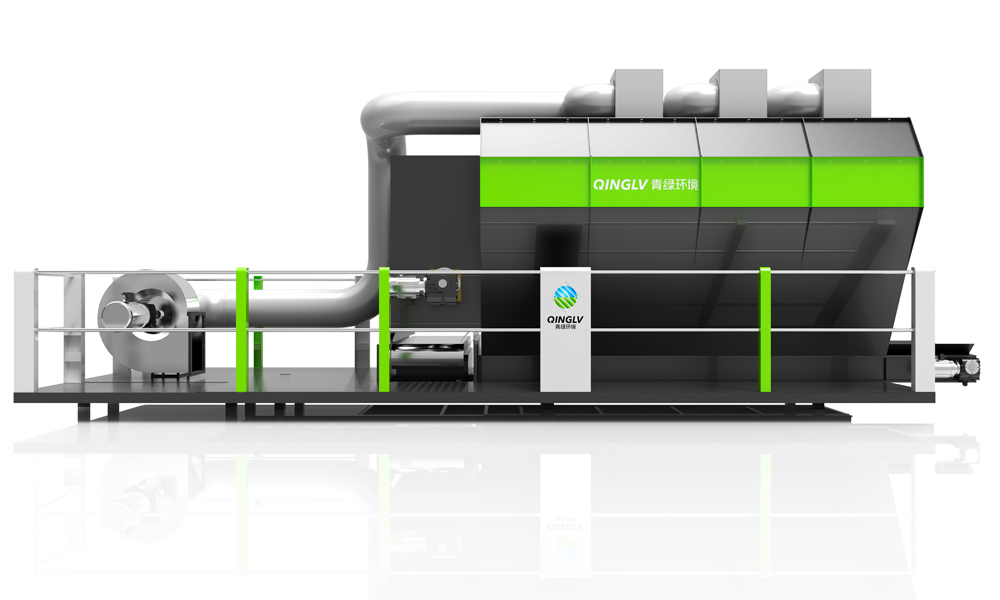 Time:2025-04-10
Time:2025-04-10
 Source:青绿环境
Source:青绿环境
Air separators play a significant role in the treatment of lightweight waste materials. By utilizing principles of aerodynamics and controlling the speed and direction of airflow, they achieve efficient sorting of waste with varying densities and shapes. The following sections will provide a detailed explanation of how air separators sort lightweight waste.

The core of an air separator lies in its ability to create a controllable airflow environment. During the separation process, waste is first fed into a specially designed separation chamber where powerful airflows blow upward or horizontally. Different materials, with their distinct densities and shape characteristics, are affected by the airflow in various ways. Lighter materials, such as plastic films and paper, are easily carried away by the airflow, while heavier materials remain in place or move at a slower speed, thus achieving separation.
Key Factors in the Separation Process
1. Airflow Velocity and Pressure
These are crucial parameters that determine the separation efficiency. For different types of lightweight waste, appropriate airflow velocities must be adjusted to ensure optimal separation. For instance, very thin plastic films may require higher airflow velocities for effective separation, while slightly heavier paper packaging can be separated with lower airflow velocities.
2. Feed Uniformity
To ensure separation quality, the feed must be as uniformly distributed as possible. If the waste enters the separation area in clumps, it can affect the penetration of the airflow and prevent some materials from being properly separated. Therefore, devices such as vibrating screens or belt conveyors are often installed before the air separator to help disperse the waste.
3. Material Pre-treatment
In practice, waste often needs to be preliminarily crushed or screened to remove oversized or heavy debris that could damage the equipment or interfere with the separation process. Additionally, for damp materials, drying treatment may be necessary, as moisture can affect the density and surface friction of the waste, thereby impacting the separation results.
Application Examples and Advantages
Air separators are widely used in municipal solid waste treatment and industrial waste recycling. They are particularly effective in separating recyclable resources such as paper and plastic from mixed waste in urban garbage, which contains a large amount of lightweight packaging materials. This not only reduces landfill volumes but also enhances resource utilization rates. Compared to other physical separation methods (such as magnetic separation and gravity separation), air separation technology is especially suitable for handling lightweight waste with significant density differences but diverse shapes.
In summary, air separators, with their unique working principles and technical features, have demonstrated great potential and value in the field of lightweight waste separation. With continuous technological advancements, air separators are expected to achieve more breakthroughs in improving separation accuracy and expanding their application scope in the future, making greater contributions to environmental protection and resource recycling.













 Prev
Prev











